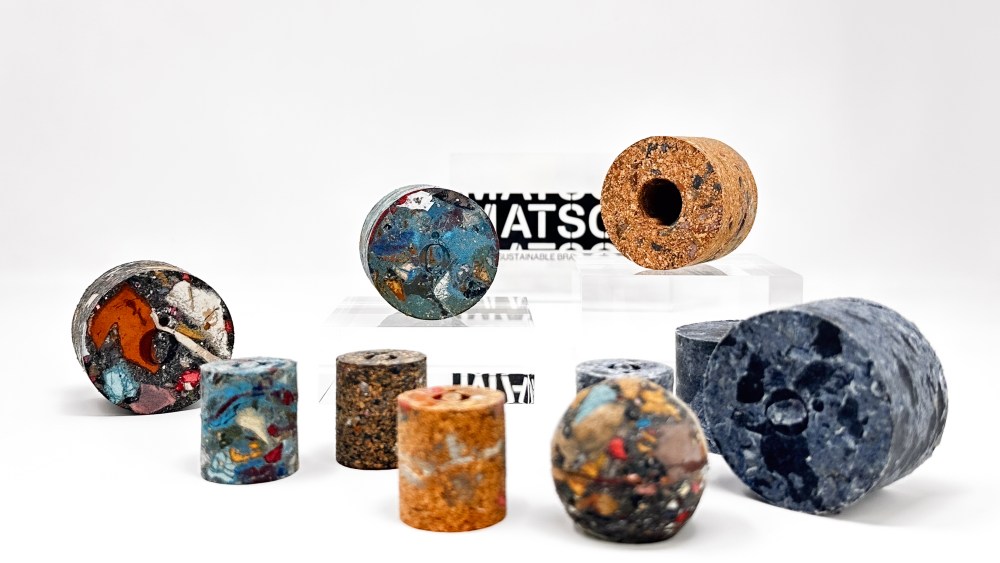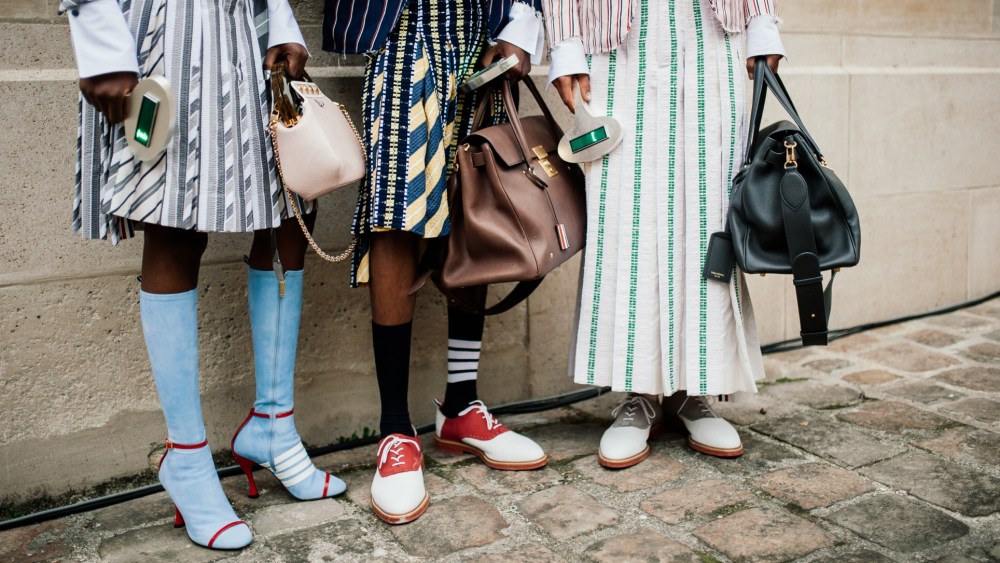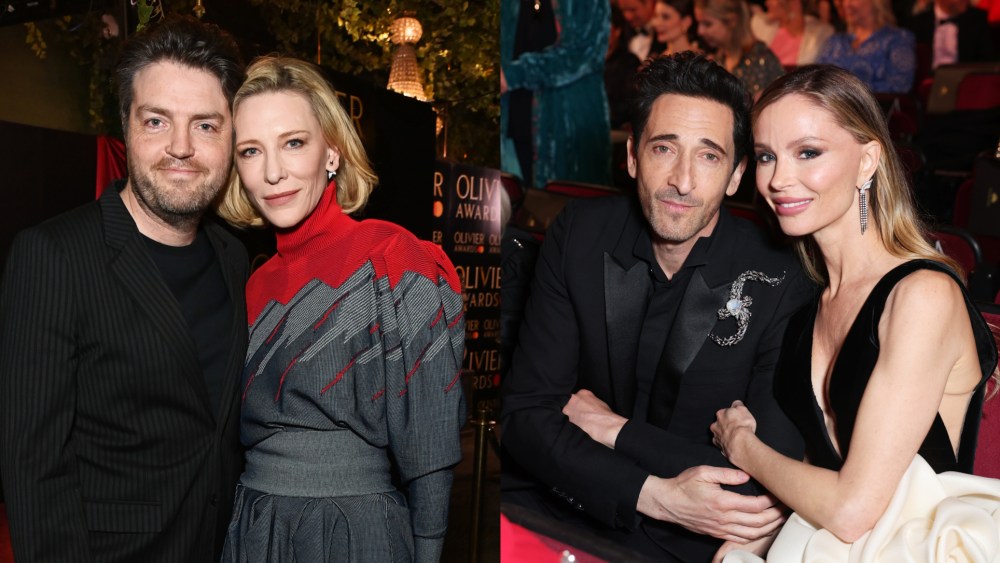PARIS — Green is the new black for beauty packaging suppliers.
That is to say, sustainability is not just a buzzword anymore, as companies swiftly change practices to meet ecologically minded goals set by government authorities. On the Continent, for instance, the European Union aims for a circular economy by 2050. And decades prior to that — by 2030 — the EU wants to ensure that all plastic packaging is reusable or recyclable in a cost-effective manner.
So packaging suppliers are swiftly upping their games, as was evident at the most recent Luxe Pack trade show in Monaco, which ran from Sept. 30 to Oct. 2.
Related Articles
There, a paper chase was on. Favini, the luxury Italian paper-maker, showcased a new addition to its Refit line: paper created with upcycled denim.
“It’s post-consumer waste — jeans, especially,” said Paola Melega, marketing assistant at Favini. She explained that the company had been using only wool or cotton in its Refit line.

The product contains 50 percent recycled material, of which half is denim. It’s also FSC- and Global Recycle Standard-certified, as well as produced with hydroelectric energy.
In the beauty industry, Refit Denim might be used for outer product packaging or catalogues, for example.
Spain’s Pujolasos showcased its new sustainble brand Matsos. It transforms waste from materials such as denim, leather and cork — and sometimes mixes those — to create eye-catching mottled caps to be used for beauty products.
“It’s upcycled,” said Montse Font, marketing manager at Pujolasos. “It is a new way to make better solutions for the industry. The fashion industry has a lot of waste.”
Creating other paper alternatives — this time for polybags — was Seaman Paper, based in Gardner, Mass.
“We produce our own tissue paper in the U.S. and Asia, and convert it all over the world,” said Nathalie Paranthoën, head of European sales. That allows for the lowest carbon footprint possible, she explained.
Seaman Paper created its Vela range to substitute and replace single-use polybags.
“All our products are 100 percent paper-made,” she said, adding that makes them wholly recyclable. “The transparency of our paper is very innovative, because it replaces the transparent plastic.”
The new version, developed with pure pulp, is strong, resistant and personalizable. The bags could, for instance, be useful for containing makeup or beauty acessories hung in-store on pegs.
“Today, it’s very used in the apparel industry and transport packaging,” Paranthoën said.
Paper was the material of choice for Concept4’s lip balm tube packaging. This included a manual push-up mechanism that replaced the traditional plastic swiveling component.

“That’s what makes it different,” said Kate Harrison, director of new product development and marketing at the Hong Kong-based, full-service company. It is also what makes the lip balm packaging wholly recyclable.
Concept4 was displaying a digital tool that helps estimate a product’s carbon emissions, too.
“It’s an amazing tool when we’re doing product development,” Harrison said. It takes into account the whole process, including the type of energy used and waste management.
“This is a tool for us to work with our factories on their KPIs to improve their carbon emissions,” Harrison said.
To be as green as possible, the French maker of fragrance diffusion technologies Scentys introduced at Luxe Pack its new invention: sustainable, reusable capsules created with a blend of metal and plastic. Those work with recyclable polymer refills.
“Brands are looking to use less plastic,” said Auriane Hermann, key account manager at Scentys. The patented fragrance technology-maker was also introducing how the system can be used as a diffuser in cars.

France’s Lessonia had biodegradable, compostable cosmetic facial masks contained in recyclable bags.
“The sachets are OPP- [or polypropylene-]oriented, therefore without aluminum foil,” said Nina Roussel, area sales manager.
She explained the masks themselves are made of various eco-materials, including lyocell, a wood cellulose, and biocellulose, with fermented coconut water. Others are of cotton, hemp or charcoal.
“And then you choose your serum,” she said.
The company highlighted its new Magic Sheet masks, which are of lyocell and coming with a design made with thermochrome ink. When mixed with the serum and applied, skin’s heat makes the graphic disappear.
“We have different possible formats — for face, neck, under eyes, lips, and pregnant women’s bellies,” Roussel said.
Such newfangled products were among the contenders of the Luxe Pack in Green Awards, which recognize eco-designed packaging innovations and CSR initiatives.
The trade show in Monaco took place in the Grimaldi Forum, which next year — for the session running from Sept. 29 to Oct. 1 — is to be expanded.
“We will have more space, new exhibition halls,” said Nathalie Grosdidier, deputy general director of Infopro Digital, Luxe Pack’s organizer. That space will be between 15 percent and 20 percent larger, equaling 64,585 square feet more.
She said the trade show is evolving, but always building on its DNA made up of selective, innovative and international components.
As an example of innovation, Grosdidier said: “We will create a new section, which will be the portal to tomorrow’s evolving ecosystem of packaging. It means new actors, materials, techologies or services.”
Artificial intelligence, printed electronics and 3D printing are all possibilities there.

“We will also develop a more international conferences program, with many brands’ experience from all over the world,” she added. An idea is to bring together industry consortia from around the globe, so they can brainstorm — share and exchange ideas.
For networking, there will be more terraces inside and outside, where people can meet and there could be animations at the expanded building.
The Luxe Home section — focused on home fragrance — will also be broadened. “We will double the number of exhibitors in this area,” said Fabienne Germond, director of Luxe Pack.
But the trade show will remain selective. “It is in our DNA,” Grosdidier said.


